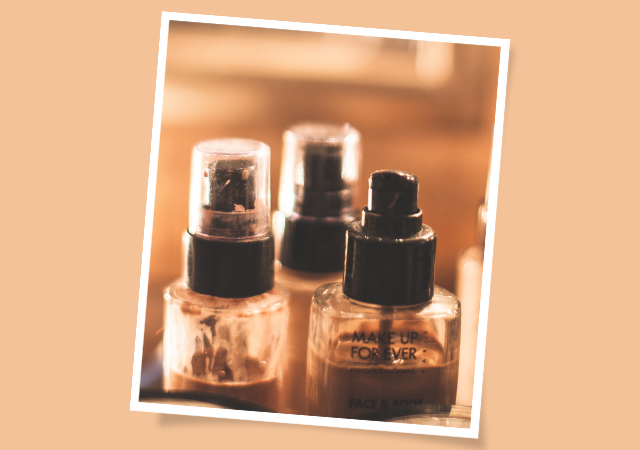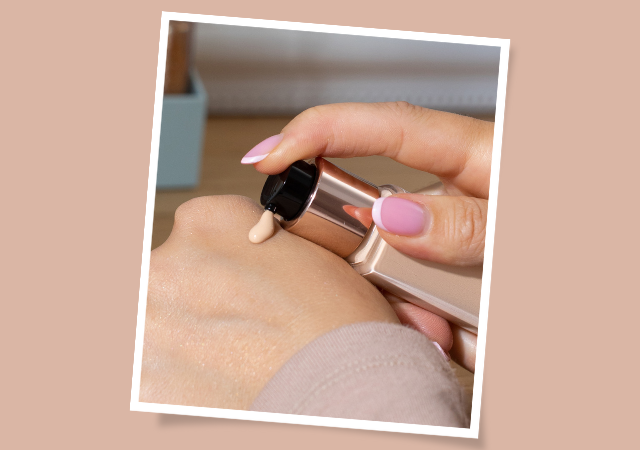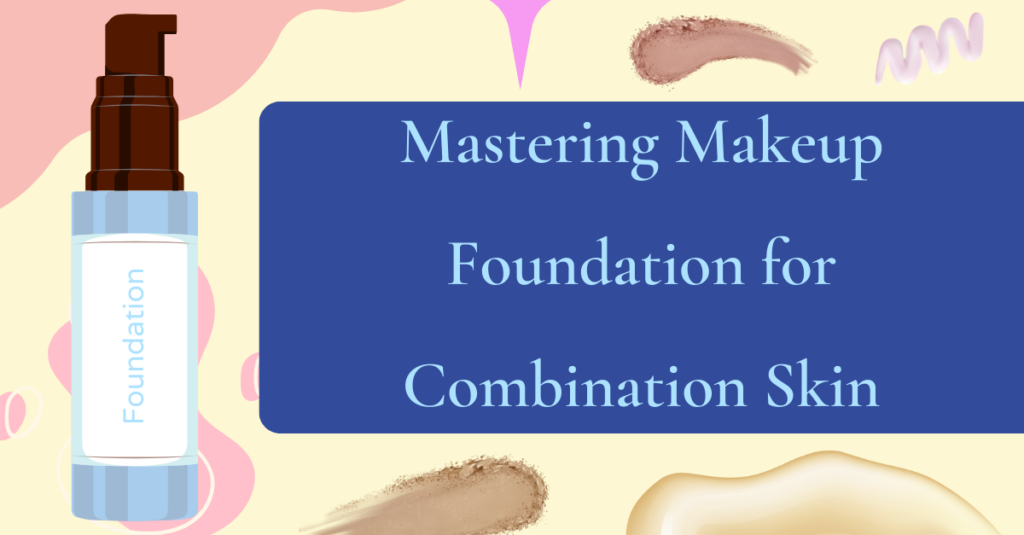Mastering Makeup Foundation for Combination Skin
Introduction
Combination skin, a delicate balance between oily and dry, presents a unique challenge when it comes to makeup application. Welcome to the ultimate guide, “Mastering Makeup Foundation for Combination Skin,” where we unlock the secrets to achieving a flawless and radiant complexion, regardless of your skin’s diverse needs.
If you’ve struggled with foundation that either leaves your T-zone shiny or emphasizes dry patches, you’re not alone. This guide is your passport to makeup mastery, promising to equip you with the knowledge and techniques necessary to conquer these common hurdles.
We’ll delve into the intricacies of combination skin, exploring its defining characteristics and common issues. From there, we’ll help you navigate the wide world of foundation choices, ensuring you pick the perfect formula and shade for your unique skin tone. Whether you’re a makeup novice or a beauty enthusiast, we’ll cover every step of the process, from prep to application and setting.
By the end of this journey, you’ll be ready to unleash your inner makeup artist and confidently showcase a flawless, glowing complexion that defies the complexities of combination skin. So, let’s embark on this beauty adventure together!
Combination Skin: The Complex Canvas

Before we dive into the world of makeup foundation for combination skin, let’s understand what makes this skin type unique. Combination skin is characterized by a delicate equilibrium between oily and dry areas on your face. Typically, the T-zone (forehead, nose, and chin) is prone to excess oil production, while the cheeks and other areas may tend to be drier. This duality can be challenging when it comes to choosing the right makeup products, as a one-size-fits-all approach rarely works.
The key to mastering makeup for combination skin lies in acknowledging and addressing these diverse needs. Here are some common issues that individuals with combination skin face:
- Shine and Oiliness: The T-zone, especially the nose, can become shiny and prone to breakouts due to excess sebum production. Managing this shine is a primary concern.
- Dryness and Flakiness: The cheeks and other dry areas may experience flakiness and tightness, especially during colder months. Foundation can sometimes accentuate these issues.
- Uneven Texture: Combination skin often leads to an uneven skin texture, with smoother areas and rough patches. The challenge is to achieve a uniform, flawless look.
- Longevity: Finding a foundation that lasts throughout the day without breaking down in the oily areas or drying out the dry spots can be quite the task.
Now that we understand the complexities of combination skin, let’s explore the world of foundation options that can help you conquer these challenges.
Choosing the Perfect Foundation: A Balancing Act

Selecting the right foundation for combination skin is crucial to achieving a flawless makeup look. There are several types of foundation formulas available, each with its own set of benefits. Here are some popular foundation options suitable for combination skin:
- Liquid Foundation: Liquid foundations are versatile and come in various finishes, from matte to dewy. For combination skin, look for a matte or semi-matte formula that helps control shine in the T-zone while providing hydration to dry areas.
- Powder Foundation: Powder foundations can be excellent for oily areas, as they help absorb excess oil. However, they may not be ideal for dry areas, so it’s important to use them strategically.
- Cream Foundation: Cream foundations are a great option for combination skin because they offer a balance between coverage and moisture. They can be applied more generously on dry areas and sparingly on the T-zone.
- Mineral Foundation: Mineral foundations are lightweight and can provide a natural, breathable finish. They work well for combination skin when applied in layers according to your specific needs.
- Hybrid Foundation: Some foundations are specifically designed for combination skin, offering a two-in-one solution with different formulas for different areas of your face.
Shade Selection: Finding Your Perfect Match

Choosing the right shade of foundation is as important as selecting the formula. A mismatched foundation shade can make your makeup look unnatural and unflattering. Here’s how to find your perfect match:
- Undertone Awareness: Determine your skin’s undertone – warm, cool, or neutral. This helps you choose a foundation shade that complements your skin’s natural tones.
- Test in Natural Light: Always swatch and test foundation shades in natural light. Artificial lighting can distort the appearance of colors.
- Sample Multiple Shades: If you’re uncertain about your shade, sample a few shades close to your skin tone to see which one blends seamlessly.
Prep Your Canvas: Skincare and Primer
Before applying foundation, proper skincare is essential. Ensure that you cleanse your face, exfoliate as needed, and moisturize. Here are some steps to consider:
- Cleansing: Use a gentle cleanser to remove dirt, oil, and impurities from your face. This ensures a clean canvas for makeup application.
- Exfoliation: Exfoliate 1-2 times a week to remove dead skin cells and maintain a smooth texture. Avoid over-exfoliating, as it can worsen dryness and oiliness.
- Moisturizing: Apply a lightweight, non-comedogenic moisturizer to hydrate your skin. Focus on using a richer moisturizer on dry areas and a lighter one on the T-zone.
- Primer: Consider using a primer specifically formulated for combination skin. Primers help to create a smooth base, minimize the appearance of pores, and control oil.
Masterful Application: Techniques for Flawless Foundation
Now that your canvas is prepped and your foundation selected, it’s time to learn the techniques for applying foundation flawlessly on combination skin. Here’s a step-by-step guide:
- Spot Application: Start by applying foundation only where needed. Dab a small amount on your T-zone to control oil and a bit more on dry areas to provide extra hydration.
- Blend Thoroughly: Use a makeup sponge or brush to blend the foundation evenly. Pay close attention to the areas where dryness or uneven texture is a concern.
- Build in Layers: If more coverage is needed, it’s better to build it in thin layers. This prevents the makeup from looking heavy on any part of your face.
- Setting Powder: Apply a translucent setting powder to lock in the foundation and control shine. Be light-handed on dry areas to avoid over-drying.
- Touch-Up Kit: Carry a compact with blotting sheets and a small brush for touch-ups during the day. Blot excess oil and reapply a bit of foundation or setting powder if necessary.
Top-Rated Products for Combination Skin

To make your journey in mastering makeup foundation for combination skin easier, we’ve compiled a list of top-rated products that cater specifically to these unique needs:
- Fenty Beauty Pro Filt’r Soft Matte Longwear Foundation: This liquid foundation offers a matte finish that controls oil in the T-zone while providing a comfortable wear.
- NARS Radiant Creamy Foundation: A cream foundation known for its buildable coverage, it’s an excellent choice for combination skin due to its hydration and long-lasting formula.
- MAC Studio Fix Powder Plus Foundation: This powder foundation is renowned for its matte finish and is perfect for touch-ups during the day.
- bareMinerals Original Foundation: A mineral foundation that provides a natural look and allows for layering to address different skin concerns.
- Urban Decay All Nighter Makeup Setting Spray: To ensure your foundation stays in place throughout the day, use a setting spray like this to control oil and maintain your makeup’s longevity.
The Final Flourish: Setting Your Masterpiece
After you’ve applied your foundation and any other makeup, it’s essential to set your masterpiece to ensure it lasts all day. Here’s how to do it:
- Setting Spray: Use a setting spray to lock in your makeup. It helps your foundation withstand humidity and environmental factors.
- Blotting Paper: Throughout the day, use blotting papers to absorb excess oil without disturbing your makeup.
- Translucent Powder: A final light dusting of translucent powder can help set your foundation in place and minimize shine.
Conclusion
In conclusion, mastering makeup foundation for combination skin is all about understanding your unique skin type, selecting the right products, and using the correct application techniques. With the right foundation and a few top-rated products tailored to combination skin, you can confidently showcase a flawless, radiant complexion. Embrace the beauty adventure, and let your inner makeup artist shine! Remember that practice makes perfect, so don’t be afraid to experiment and find the perfect routine that works for you. Your skin deserves it.

My name is Rohit Vagh and I’m a content writer specializing in fashion and lifestyle. I have three years of experience in this field and have written various articles. My writing style is creative and engaging, and I strive to create content that resonates with my readers. I have a deep passion for fashion and am constantly researching the latest trends and styles to make sure my readers are up to date. I’m excited to continue my career in blogging, and I’m always looking for new opportunities in the fashion and lifestyle space.





